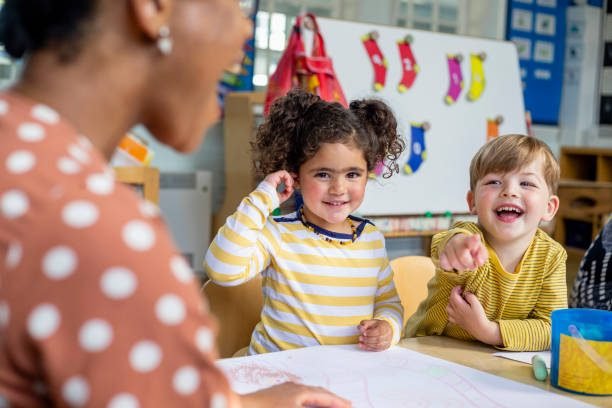In the earliest years of life, a child’s ability to communicate blossoms through everyday interactions. Long before they speak in full sentences, they are listening, observing, and making sense of the sounds, gestures, and facial expressions around them. In nursery settings, these seemingly simple moments—talking, singing, and pointing—are powerful tools in supporting early communication and language development.
High-quality early years settings understand that nurturing communication is not about flashcards or rote learning. It’s about creating a language-rich environment where children feel heard, seen, and encouraged to express themselves—no matter how small their voices may be.
Why Early Communication Matters
Strong communication skills are the foundation for learning, social development, and emotional well-being. A child who can express their needs, ask questions, and share ideas is better prepared to build relationships and thrive in group settings. These skills also set the stage for literacy, problem-solving, and confidence later in school and life.
Nurseries play a pivotal role in this process, offering children countless daily opportunities to develop their language naturally. Through play, routines, songs, and storytelling, staff gently guide children toward becoming confident communicators.
Talking: The Power of Conversation
Conversation is one of the most effective ways to support early language. Whether narrating activities (“Let’s put on your coat now”), asking questions (“Where is the teddy hiding?”), or responding to a child’s babble, nursery practitioners model language that children absorb and imitate.
In nurturing environments like Westbury Day Nursery, practitioners are trained to be attentive conversational partners. They don’t just talk at children—they talk with them, pausing to listen and giving space for even the smallest responses. This responsive interaction encourages turn-taking, builds vocabulary, and helps children understand the rhythm and rules of conversation.
Singing: Language Through Melody
Singing is another powerful tool. Songs and rhymes are rich in repetition, rhythm, and rhyme—all of which help children learn new words and sounds. Singing slows down language, making it easier to process and remember. It also supports listening skills and auditory memory.
Nurseries often weave songs into daily routines—tidy-up time, washing hands, story transitions—to make these moments both engaging and educational. Children who may be shy to speak often feel more confident joining in with familiar tunes, giving them a safe way to practise speech in a fun, social context.
Pointing and Gesturing: Building Understanding Before Words
Before children can speak, they communicate through gestures like pointing, waving, or reaching. Encouraging these early forms of communication helps children express themselves while learning that gestures have meaning. Practitioners who respond to pointing (“You’re showing me the ball—let’s play with it!”) are affirming the child’s effort to connect and are helping build a bridge toward spoken language.
Visual aids, picture books, and pointing games further support language development by giving children something tangible to talk about. In an early years nursery New Malden families trust, this kind of active engagement is a core part of the curriculum—designed to bring communication to life through everyday exploration.
Creating a Language-Rich Environment
Beyond specific activities, it’s the overall atmosphere that nurtures communication in nurseries. A language-rich environment is full of books, labels, storytime, and rich adult-child interactions. Practitioners narrate what children are doing, introduce new vocabulary, and model expressive, respectful dialogue.
Importantly, they also value each child’s unique language journey. Whether a child is bilingual, learning to speak later, or already stringing together sentences, the focus is on encouraging expression, not pushing perfection.
Conclusion: Little Voices, Big Potential
Communication development doesn’t require flashcards or forced drills. It happens in the everyday: during snack time chats, sing-alongs, shared picture books, and giggles on the carpet. By talking, singing, and pointing with intention and warmth, nursery practitioners empower children to use their voices with confidence.
These early interactions are not only the first steps toward language—they’re the beginnings of connection, confidence, and curiosity. When nurseries make communication a natural part of daily life, they lay the foundation for children to thrive in school and beyond.

